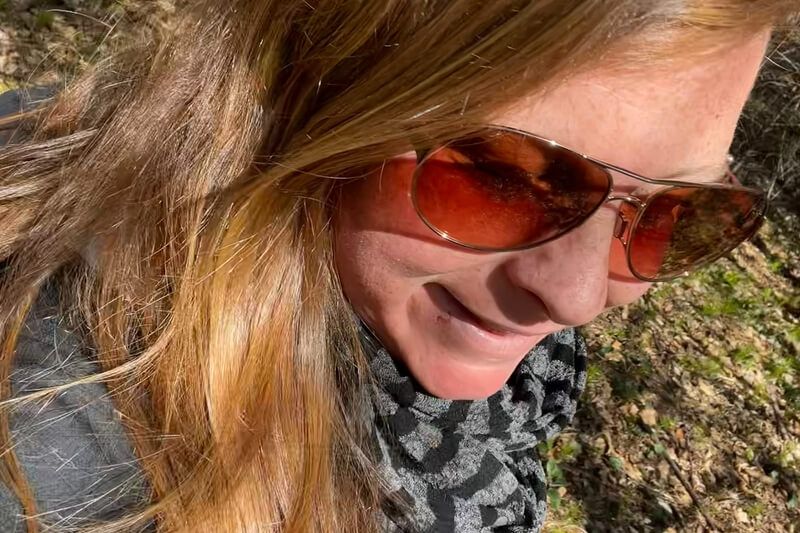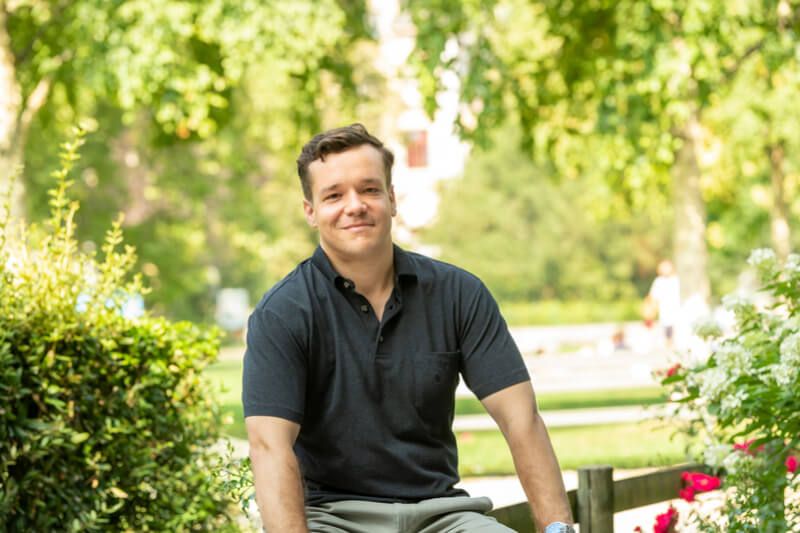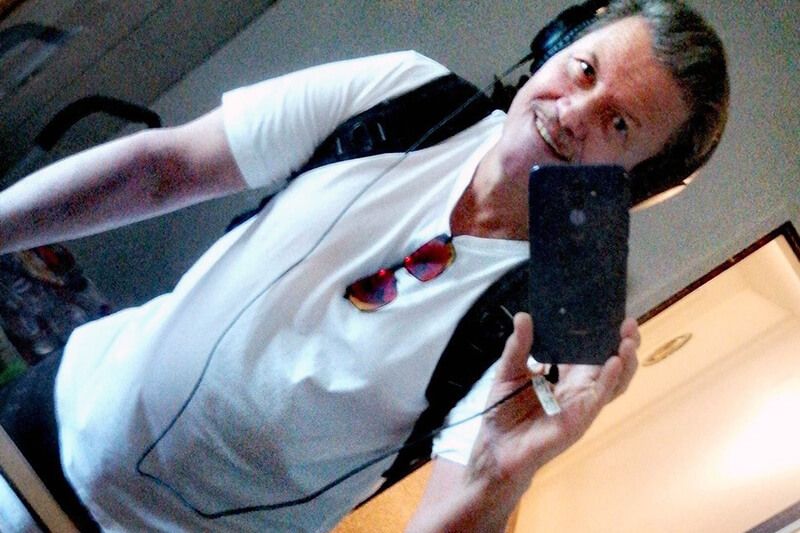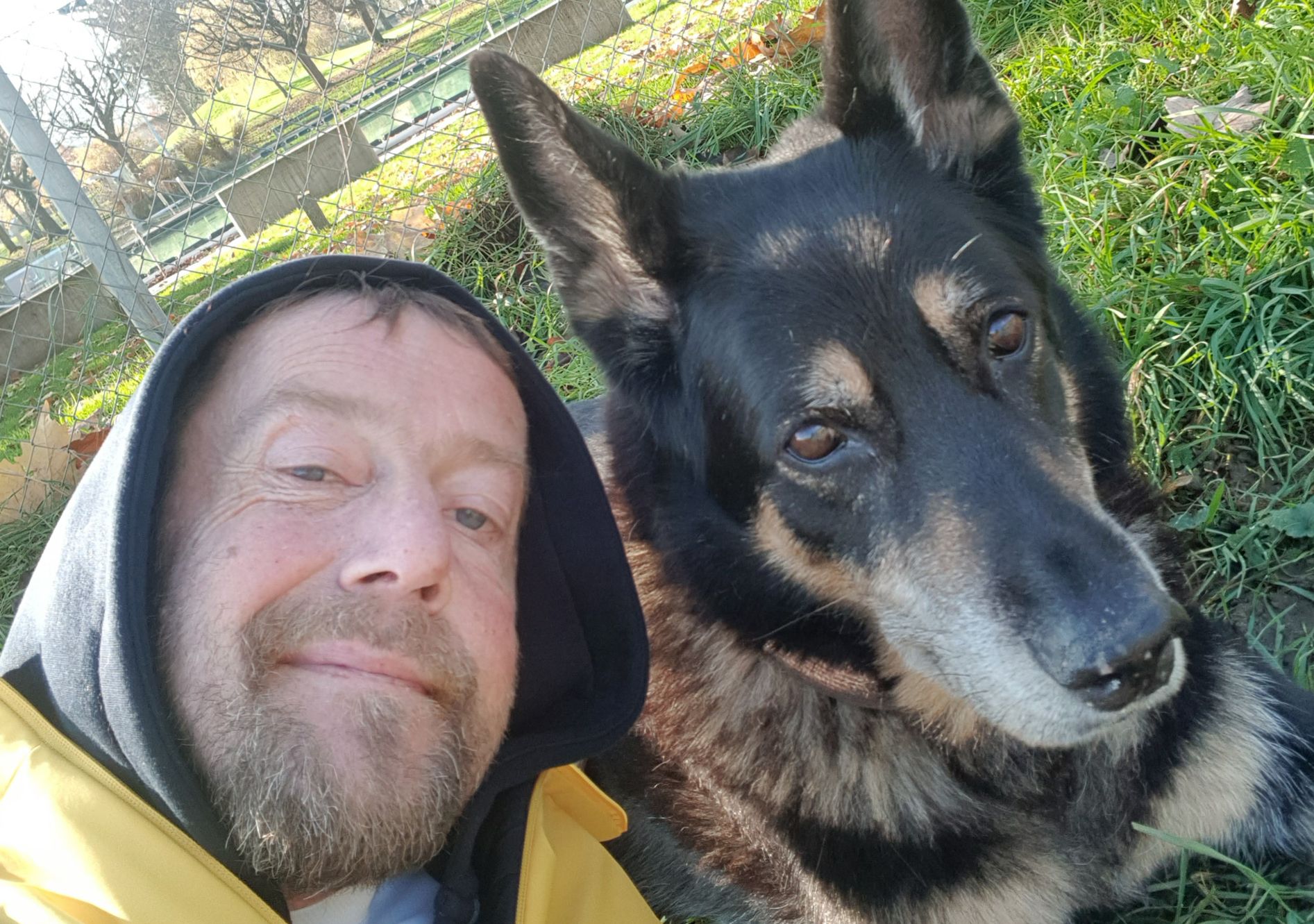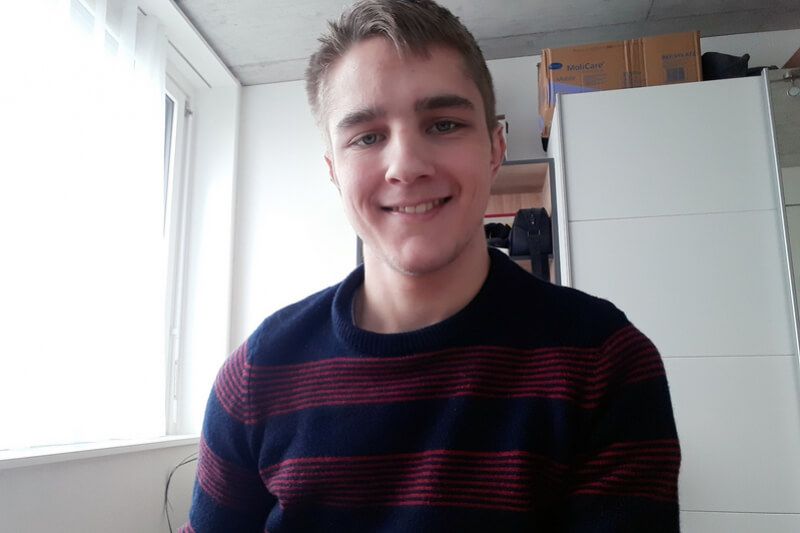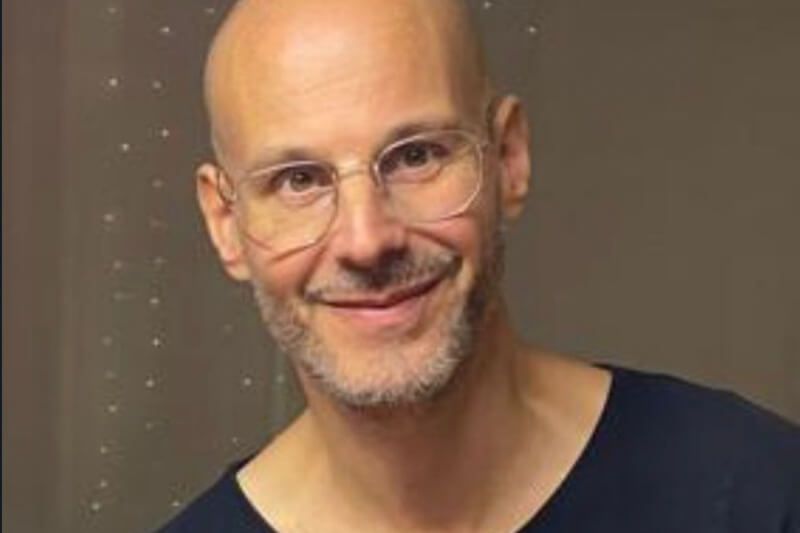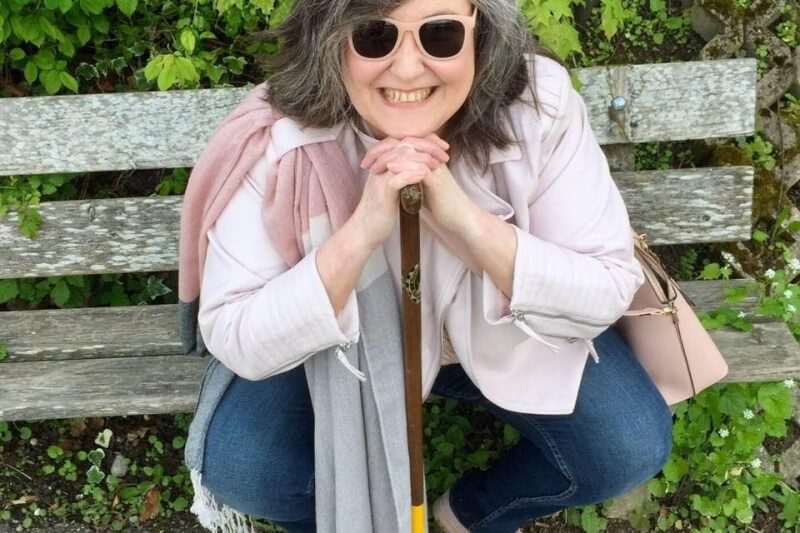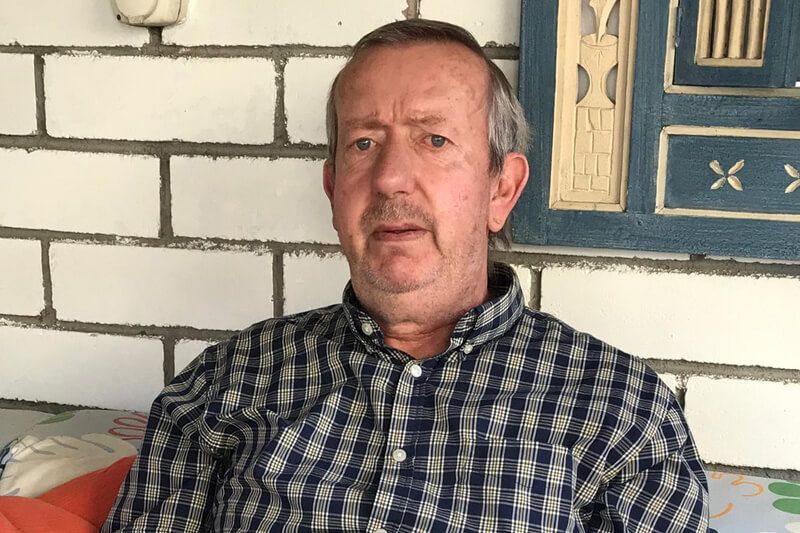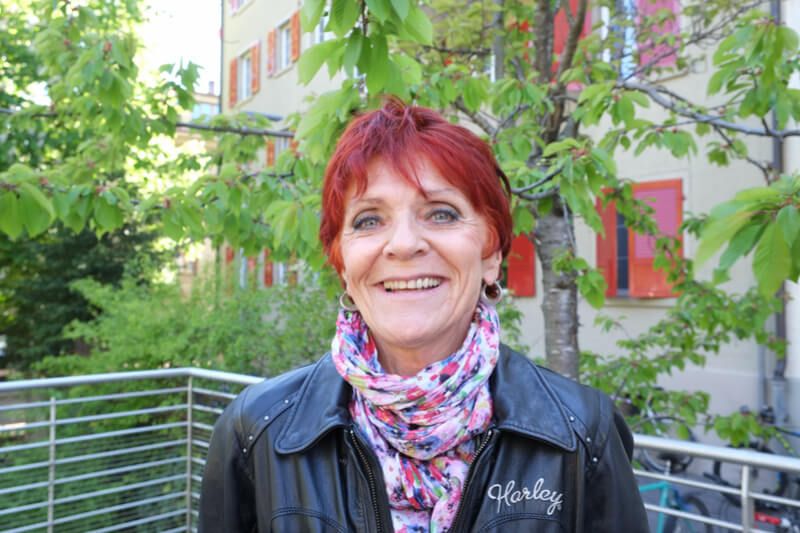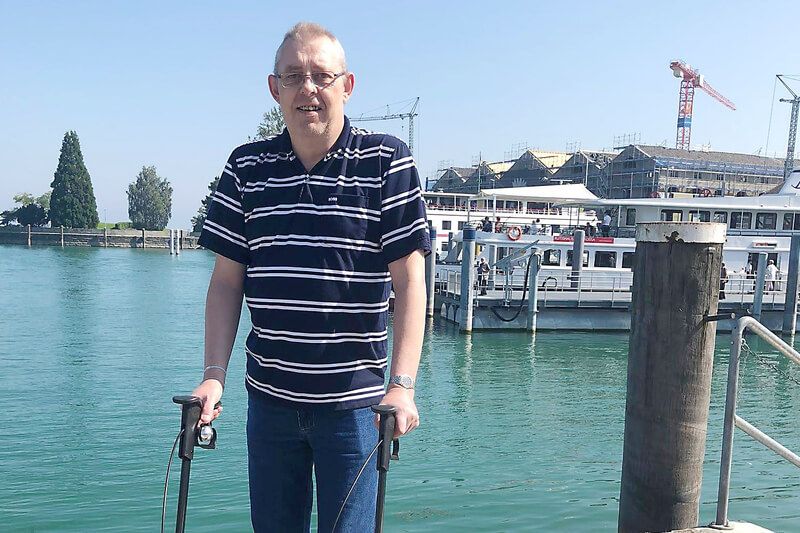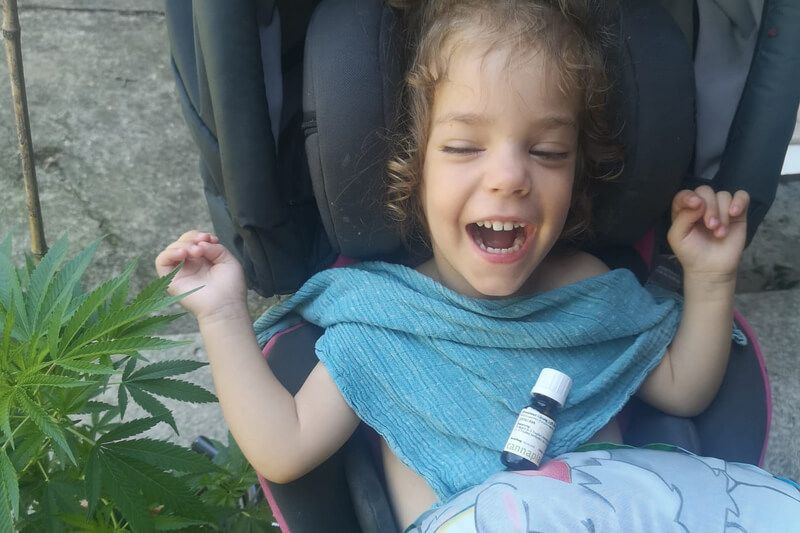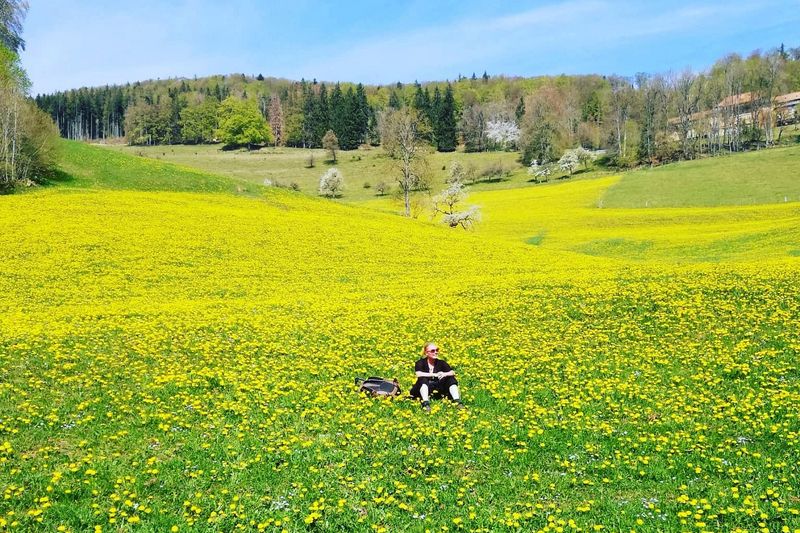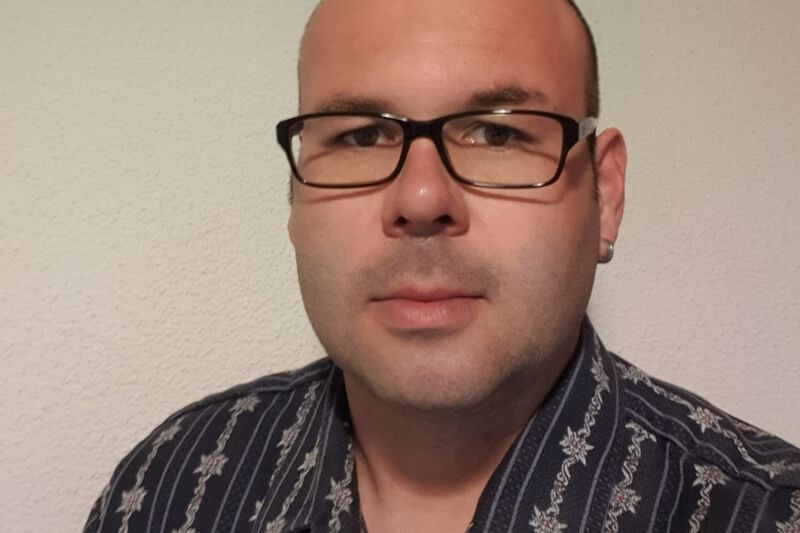Franziska
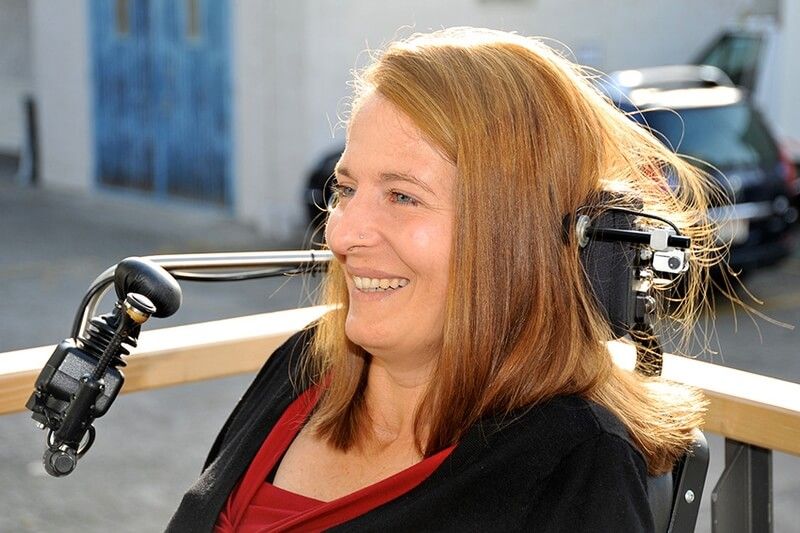
“Without cannabis I probably wouldn’t be alive today.”
It was in the summer of 2009 when my “old” life ended abruptly overnight due to a paragliding accident. I broke several cervical vertebrae in the accident and have been paralyzed from the neck down ever since. I can still move my head and, thanks to special control sticks, I can use my chin or nose to operate my electric wheelchair, my cell phone and my computer. Apart from that, I depend on outside help around the clock - without it I would die of thirst or starve.
In the time after the accident, I struggled a lot with my fate. Anger, endless sadness and the question of why tormented me. I'm a life-affirming person, but at the time I wished I had died in the accident.
Pervasive pain
As if the sudden disability and internal struggles weren't bad enough, the first severe spastic cramps began around two months after the accident. Six months later, excruciating, neuropathic pain occurred. In my case this means: I can no longer move my body, but I feel tingling, stabbing pain when touched - especially on my hands and arms. It feels like your hands and arms are constantly submerged in boiling water - pure torture. The pain is caused because my nerves in my spine were crushed and are now scarred.
Life-threatening side effects
At first I was optimistic and thought there would be medication for my pain. As is usual with neuropathic pain, I was prescribed a mixture of different medications: painkillers - including opiates, which didn't help at all, which is why I stopped taking them straight away. I also had a mix of muscle relaxants, antidepressants and strong sedatives. The problem is that these drugs are highly addictive. As time went on I got worse and worse. I had a thrombosis, a pulmonary embolism and three pneumonias. All of this could have ended fatally for me. In addition, the “chemical cocktail” caused extreme damage to my stomach and intestinal flora. I vomited after every meal. I was noticeably losing weight. it could not go on like that. I put myself on medication withdrawal.
Cannabis replaces medication
I found out in the accident clinic that cannabis helps with my pain. Many patients “smoked weed” there. I just hadn't used cannabis systematically as therapy. When a friend told me that cannabis would also help with spasticity, I decided to try self-therapy. And I was thrilled: my muscles relaxed, the pain was no longer as intense and my mood brightened. With the help of cannabis, I gradually stopped taking the various medications I was taking. Only then did I realize how dependent I was on them. Because after stopping it, I struggled with severe withdrawal symptoms such as insomnia, vomiting, depression and increased pain. Smoking cannabis also helped against this.
Legal cannabis medicines too expensive
At my request, a doctor friend of mine applied for a special permit from the BAG . This gave me cannabis medicine in drop form . Cannabis flowers, which I smoke during the day to relieve my spasms, are not legally available. The cannabis drops from the pharmacy are much too low in dosage for me, since I have stopped taking all other medications, and are also much too expensive. A 50 ml bottle of cannabis tincture from the pharmacy costs 550 francs. Legally, at these prices, I would spend well over 30,000 francs a month on cannabis medication in the dosage I need.
Because I could never afford it, I have to obtain cannabis illegally for smoking and ingestion. For me this means “procurement stress”. On the one hand, because I depend on the help of others: They have to act illegally so that I feel less pain. On the other hand, because the costs are still high - sometimes I prefer to take a little less, even though the pain is almost unbearable. Because I always have in the back of my mind how expensive my therapy is. I still take vitamins, trace elements and nutritional supplements so that I feel the way I feel today and they are also expensive.
Exemplary Spanish model
Since 2016, I have been able to avoid the “procurement stress” for a few months a year. Because my pain gets worse when it's cold, I spend the winter on the Canary Islands. The warmth is good for me, I can afford intensive physiotherapy - which also has a positive effect on my body and soul. And I can get cannabis legally at any time and without stress.
In Spain there are so-called “Cannabis Social Clubs”. Membership costs 50 euros per year. I receive very competent care there and can now order my medication in the correct dosage and in capsule form over the phone at any time. The costs per month are around 1200 euros - my accident insurance even covers part of it. I can also try out different types of cannabis to find out which ones work best for my pain. I would also like to see a system like this in Switzerland.
Cannabis improves quality of life
Looking back, I can say that cannabis probably saved my life. And even gave me back a certain quality of life. My gastrointestinal problems are a thing of the past - I even have my appetite again. Cannabis also relieves my spasticity and neuropathic pain: And since I stopped taking antidepressants thanks to cannabis, I have been able to escape the pain to some extent through targeted meditation. That wasn't possible with the medication because it made me fogged up.
My work at MEDCAN
I joined the Medical Cannabis Association in 2015 and took over the presidency after the death of our founding member Bruno Hiltebrandt in the same year. For me, working in the Association is very important for personal but also for other reasons. On the one hand, I was able to exchange ideas with other sufferers at patient meetings and thus improve my own therapy. On the other hand, it means a lot to me to work with the Association to inform people about the possibilities of cannabis therapy, to protect people from drug addiction and at the same time to win more and more supporters for our concerns in public and politics.
Interesting facts about quadriplegia
In ancient Greek, “tetra” means four and “plēgḗ” means shock or paralysis. In quadriplegics, all four limbs, arms and legs, are paralyzed. Every year around 100 new people are affected in Switzerland, mostly as a result of accidents or tumors Tetraplegia: Damage to the spinal cord in the area of the upper 7 (cervical) vertebrae or the 8 upper vertebral segments Organic restrictions as a result of paraplegia Bladder and intestinal functions Functioning of the lungs and heart etc. Sexual functions Sense/sensitivity, e.g. feeling cold or warm Common side effects of quadriplegia Many affected people suffer from pain or abnormal sensations in the borderline area of paralysis, but also below it in the paralyzed part of the body. These are described as burning, stinging or throbbing and - as with Franziska - can occur permanently or only when there is irritation (e.g. touch). The pain often leads to a vicious circle of pain, anxiety, sleep disorders and depression for those affected.

